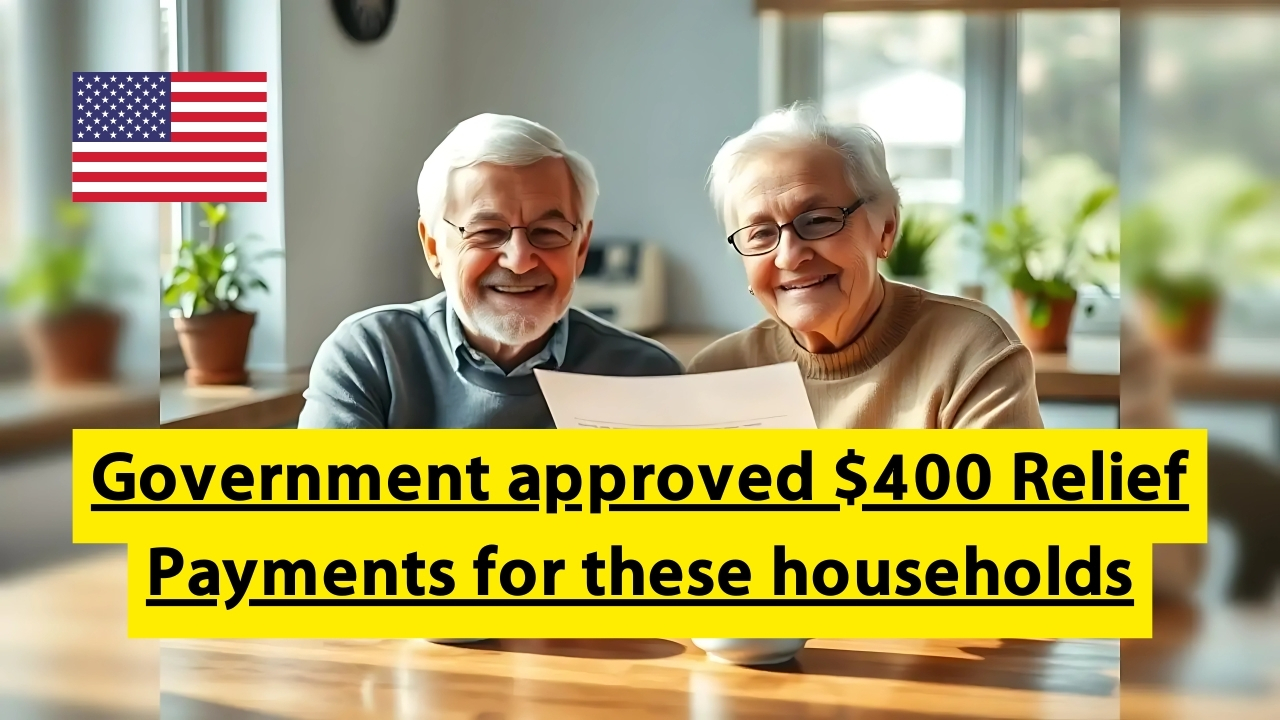Relief Payments : Federal authorities have approved a new $400 relief payment aimed at providing immediate financial assistance to qualifying households across the nation. This targeted program focuses on families experiencing specific economic hardships, with distribution set to begin within the coming weeks. Understanding the qualification criteria and checking your household’s eligibility status ensures you don’t miss out on this important financial support.
Household Categories That Qualify
The $400 relief payment specifically targets households meeting predetermined criteria based on family composition and economic circumstances. Families with dependent children under 18 automatically enter the eligibility pool, particularly those with multiple children attending school. Single-parent households receive priority consideration due to unique financial pressures they face managing household expenses independently.
Multi-generational households caring for elderly relatives also qualify under expanded guidelines. These families often shoulder additional medical and care expenses that strain household budgets. Foster families and those with recently adopted children fall under special consideration categories, recognizing the financial commitments involved in providing stable homes for vulnerable children.
Income Requirements and Thresholds
Household income plays a crucial role in determining eligibility for the $400 payment. Families earning below 200% of the federal poverty level automatically qualify, with sliding scale considerations for larger households. A family of four with annual income under $55,500 meets primary eligibility requirements, while smaller households face proportionally lower thresholds.
The program includes provisions for recently unemployed household members, considering current circumstances rather than previous year’s income. Families experiencing significant income reduction due to reduced work hours or job changes can submit documentation proving current financial status. This flexibility ensures assistance reaches households facing immediate needs regardless of past earnings.

How to Check Your Eligibility Status
Several methods exist for verifying household eligibility for the $400 payment. The official government portal provides an eligibility checker tool requiring basic household information. Users input family size, income range, and dependent information to receive instant preliminary eligibility determination. This tool updates regularly as program parameters adjust.
Phone verification services operate during extended business hours for those preferring personal assistance. Representatives can access household records using Social Security numbers and addresses to confirm eligibility status. Community assistance centers also provide in-person eligibility screening, particularly helpful for households with complex circumstances requiring detailed review.
Required Documentation and Verification
Eligible households must provide specific documentation to complete the payment process. Recent tax returns or current pay stubs verify income requirements, while birth certificates or school enrollment forms confirm dependent status. Utility bills or lease agreements establish current residence for payment delivery purposes.
Special circumstances require additional documentation. Medical expense receipts support applications from households with disabled members, while court documents verify foster care or adoption status. Unemployment benefit statements help recently jobless individuals prove current financial situations differ from previous tax filings.
Payment Distribution Methods and Timeline
The government utilizes multiple distribution channels to ensure efficient payment delivery. Households with existing direct deposit information from tax returns or benefit programs receive automatic deposits without additional action required. This method provides the fastest payment delivery, typically within 7-10 business days of approval.
Paper checks remain available for households without electronic banking access. These payments require additional processing time, with delivery expected within 3-4 weeks. Prepaid debit cards offer a middle-ground option, providing faster access than paper checks while serving those without traditional bank accounts.
August month SSI Payment are coming on this date – Check now
Relief Payments Avoiding Common Application Mistakes
Several errors can delay or prevent payment receipt. Mismatched names between application materials and official records create processing delays requiring manual review. Ensuring all household members’ information matches government databases prevents these issues. Address discrepancies particularly affect paper check delivery, making accuracy crucial.
Income calculation mistakes represent another common problem. Households should include all qualifying income sources while properly excluding non-taxable benefits. When in doubt, providing additional documentation helps clarify situations. Rushing through applications often leads to errors, so taking time to review all information before submission proves worthwhile.